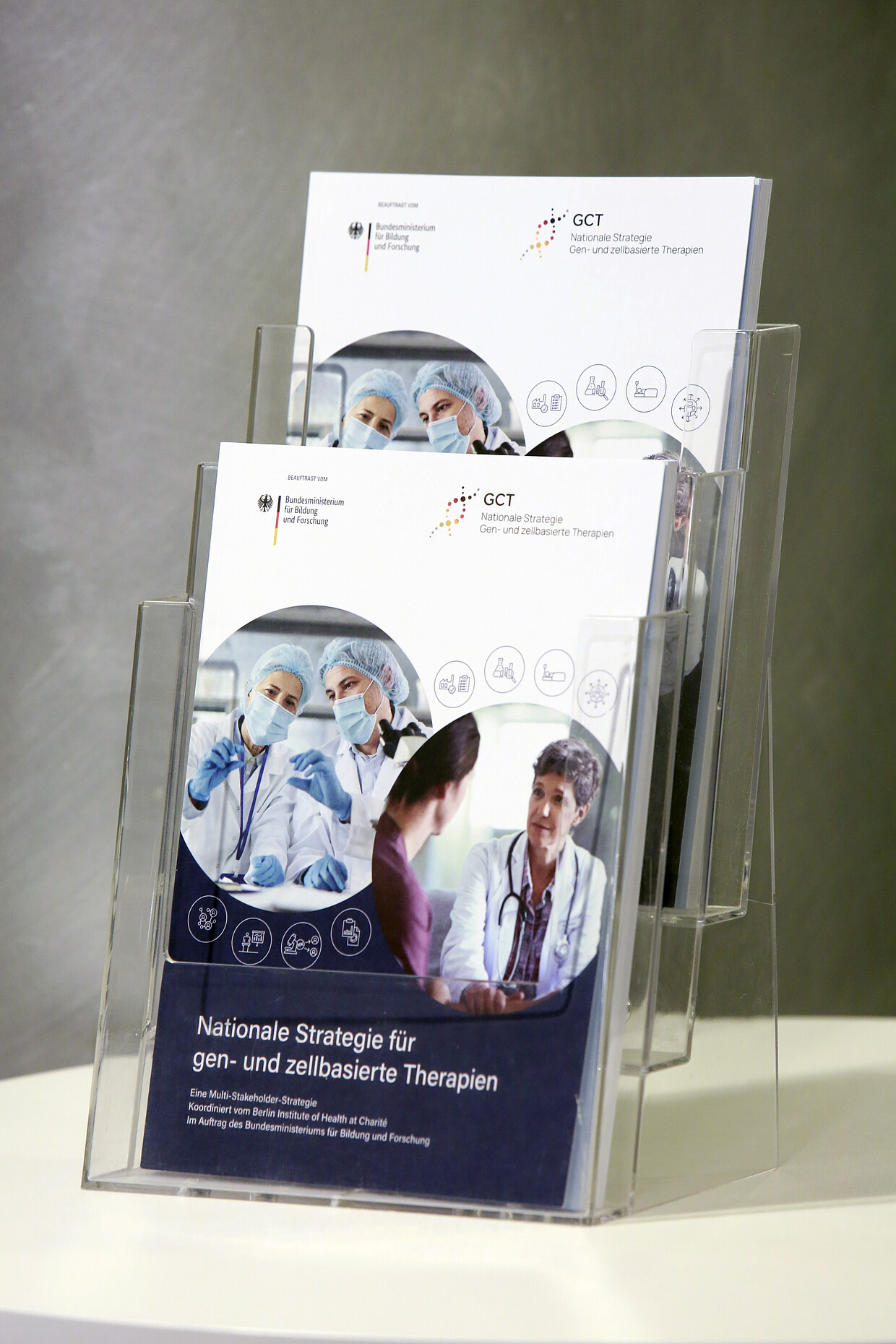Progress in implementing the objectives of the National Strategy

Status: October 6, 2025
Introductory text:
The BIH is implementing a number of specific activities as part of the National Strategy for Gene and Cell-Based Therapies (National Strategy GCT). These include, for instance, setting up the Regulatory Support Unit (RSU) to provide regulatory advice, establishing the National Network Office, organizing the GeneNovate entrepreneurship program and GeneNovate Investors' Day, as well as providing specific project and personnel funding.
In order to achieve the goals outlined in the strategy, stakeholders have developed a comprehensive package of measures covering all eight topics. Of the 91 measures in total, approximately one-third are already being implemented.
Some particularly important elements are already well advanced: they lay the foundation for a governance structure , infrastructure, regulatory support, the promotion of young talent, and the political and social visibility of this subject.
Here we present examples of measures and accompanying activities. While measures are the core of the National Strategy, it is often the targeted activities—such as projects, programs, or supporting structures—that help to ensure that these measures are implemented in practice and their goals are achieved. Collectively, they demonstrate progress that has been made and show that the National Strategy for GCT is effective, significantly advancing Germany in the field of gene and cell-based therapies.
Progress in implementing the objectives of the National Strategy
Establishment of an organizational structure (governance structure) for the National Strategy GCT
Central information platform and GCT Atlas
Use of existing infrastructure by start-ups
Streamlining contract drafting processes
Expansion of training and further education programmes for qualified personnel in the manufacture of gene- and cell-based therapies
Establishment/continuation of a national GCT registry
Analysis of possible value creation potential
Establishment of an interdisciplinary therapy recommendation board for quality assurance in gene and cell therapies
Berlin Center for Gene and Cell Therapies
Political visibility and communication
Involvement of patients and patient organizations
Strengthening European cooperation
Establishment of advisory services by the Regulatory Support Unit (RSU)
Conclusion
These examples show that the National GCT Strategy is making visible progress.
With clear structures, reliable governance, strong support for researchers and developers, regulatory advice, political visibility, and targeted promotion of young talent, we are creating the conditions for successful translation and for gene- and cell-based therapies to be developed successfully in Germany and made available to patients safely and as quickly as possible.